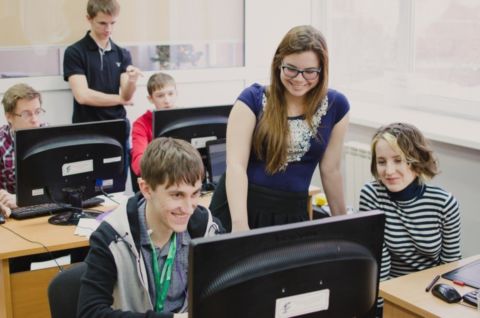Eye strain or eye fatigue is a common condition which appears due to hard and long work, for example, on a computer or when using other digital devices. Vitaliy Epishev, Associate Professor of the Department of Theory and Methodology of Physical Culture and Sports, Director of the SUSU Sport Science Research Centre speaks about why our eyes get tired and how to reduce the load on them.
Before doing exercises for eyes, it is necessary, first of all, to determine what caused the discomfort. When we are sitting, especially when working on a computer, the most important thing is to control the position of the head, because blood circulation in the brain can influence the decrease in visual acuity. That is, when we are sitting at a table, it is important not to lean our head forward, because under the influence of gravity this provokes deviation from the vertical axis of the spine and leads to constant overstrain of muscles in the upper thoracic spine, which sooner or later will be redistributed to the attachment sites (of paravertebral muscles of the head). This, in turn, can cause impaired venous outflow, increased intracranial pressure, and discomfort.
Due to poor blood circulation, headaches (migraines) may occur, what in itself may lead to a decrease in visual acuity. Therefore, it is necessary to pay attention mainly not only to exercises for eyes, though they are important, but to the ergonomics of the workplace while we are sitting.
When strictly following the rules of the ergonomics of the workplace, it is necessary to perform the simplest exercises from time to time to warm up the eyes (since there are also muscles there, and according to the law of nature, every muscle has to work). The main problem appears when we are looking at a distance of 30-40 centimetres for a long time (5-6 hours), the muscle fixes in this position and it becomes hard to keep the visual acuity in order to look into the distance.
So, when at home, you can perform the easiest exercises, for example, alternately looking into the distance and at something nearby: come to the window and look, for example, at a coin (stick it to the window glass beforehand), and then look through the window into the distance. You can simplify the task: focus on some spot on the window handle, then look at the window frame, and then suddenly look into the distance. This easiest exercise quickly reduces eye strain and trains the muscles.
We invite applicants to enrol in the Department of Theory and Methodology of Physical Culture and Sports of the SUSU Institute of Sport, Tourism and Service!




